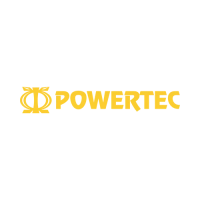Model
1000
Installation and Operation Manual
Page
25
OFFICIAL 6/1/2001
H
OW
D
O
I …
CONNECT A DIGIMAX
®
?
The DIGIMAX
®
is a
crystal-based Speed or Ratio
controller. It creates a train of
pulses to command the
movement of a motor when
the drive is operating in digital
speed mode.
A suitable train of pulses
applied at TB1 terminal 11
(with respect to TB1-9) of the
Model 1000 commands the
drive to turn the motor 3° for
each pulse. However, the
drive’s routine adjustments
such as MIN SPEED, MAX
SPEED, ACCEL, DECEL, and
JOG SPEED are not
functional. The DIGIMAX
supplies these functions.
The wiring diagram at left
shows all the basic
connections to the DIGIMAX.
Not all of them are necessary
for all installations. For
instance, external frequency is
only needed for slave mode.
The power, ground, and
shield connections on
DIGIMAX TB1 are necessary.
The jumper from TB1-4 goes
to a screw in the back plate.
The pulse train comes from DIGIMAX TB1 terminals 11(+) and 10(-). It is applied to the Model 1000
TB1 terminals 11(+) and 9(-).
The MAN/AUTO switch may be left out. You can make a straight connection from DIGIMAX TB1-7 to
Model 1000 TB1-10. Even this connection may be left off if the Current Controller board jumper JP1 is in
the AF position (see page 23).
The DIGIMAX control inputs are on TB2 terminals 5 through 10. These inputs require +24VDC. TB2
terminal 4 is the common connection for these isolated inputs. RUN (terminal 5) and ESTOP (terminal 7)
are required for DIGIMAX operation. PRESET (terminal 6) is an optional second speed. The REVERSE
input (terminal 8) must operate in conjunction with the drive’s reverse input, if it is used.
The EXTERNAL FREQUENCY input (TB2 terminals 13 and 14) is only used in the SLAVE mode. It is
used when the DIGIMAX is to follow another pulse train from another DIGIMAX or drive.
The input at DIGIMAX TB2 terminals 15, 16, and 17 in an optional motor load reading signal.
For further information, refer to the DIGIMAX Installation and Operation Manual.

